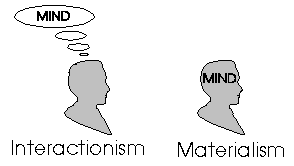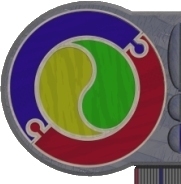Preliminary Definitions
(taken variously from The Macquarie and Heritage Illustrated Dictionaries)
- artificial
- made by man, rather than occurring in nature, that which is not
real but is intentionally made to appear so.
- knowledge
- refined information with context specific rules for using that
knowledge to solve problems
- intelligence
- the capacity to acquire and apply knowledge, the faculty of thought
and reason, superior powers of the mind, to understand, comprehend,
power of perceiving, knowing, see intelligent.
- intelligent
- the ability to understand, revealing intelligence
- mind
- the human consciousness that originates in the brain and is manifested
especially in thought, perception, feeling, will, memory or imagination;
the principle of intelligence; the spirit of consciousness regarded
as an aspect of reality.
- thought
- The act or process of thinking
- thinking
- Thought, to formulate in the mind, characterised by thoughtfulness,
rational, a way of reasoning, judgement
- consciousness
- The essence of totality of attitude, opinions, and sensitivities
held or thought to be held by an individual or group.
'Artificial Intelligence' - Common Perception or Mis-conception
When Arthur C. Clarke wrote of a pervasive and homicidal computer
called HAL in '2001 : A Space Odyssey', he managed to crystallise
in the minds of many, what perils lay ahead for creators of intelligent
machines. Most science fiction (as opposed to fact) lays on the pretext
that 'machines' seen to be intelligent are 'smarter' than their human
counterparts. Machines have been credited (in sci-fi) with emotions,
murderous tendencies, dishonesty, deceitfulness, collaboration (with
other machines), adaptation, self procreation and self-protection.
Reality sees truly 'intelligent' machines as a yet largely unrealised
ideal, designed by people, for the use of people, controlled (ultimately)
by people. The chase for true machine intelligence, although as yet
unrealised, has lead to some important breakthroughs in allied fields
of research.
The mimicking of so-called intelligent actions (vision, speech, reasoning,
learning and so on) have lead to many of the fields that are discussed
elsewhere on this site.
The quest for machine intelligence is plagued by the receding
horizons effect: Once a particular goal has been reached in
the quest of exhibiting intelligence, the achievement of that particular
task no longer seem to require much intelligence. Increasingly, it
is being realised that to get a machine to do complex looking things
is easier than getting them to do the 'simple' everyday things we
take for granted.
The Chase For An 'Intelligent' Machine.
If an entity is intelligent, there should be a quantifiable set of
characteristics that define it's intelligence. Clearly, an intelligent
entity can REASON (ie. to draw conclusions from data, premises,
heuristics/rules of thumb or to infer), and UNDERSTAND (grasping
the meaning of concepts, to comprehend, knowledge of a topic).
Due to the nebulious nature of intelligence, and its supposed connection
to the sentient MIND, definitions of intelligence
are not rigorous. Creating something artificial based on a partial
understanding of the underlying concepts is frought with difficulty.
The study of machine intelligence incorporates aspects of Computer
Science (programming and data representation), Philosophy (the study
of basic questions of life, the universe and everything, and the concept
of the mind), Linguistics (the study of methods of communication and
information structure) and Cognitive Science (the study of how animals
perceive their environment).
Most people would agree that the human MIND has
something to do with our intelligence level. The question that naturally
follows from this is whether a mind can be incorporated into a machine
(ie. can a mind be manufactured). To attempt to answer this, AI researchers
need to know what and where (if anywhere) the mind exists. This poses
the so-called MIND-BODY problem, central to
a number of branches of AI research.

Many would argue (those called Interactionists)
that the mind is a spiritual entity that exists separate to the physical
body. Although separate, the mind and body interact influencing each
other continually. Interactionists would argue that the spiritual
mind uses the physical brain as a tool, and so the brain is not the
intelligence of a person but simply a superbly designed processing
box (incorporating parallel processing on a grand scale). If this
philosophy is correct then, from an AI point of view it would seem
an impossible task to produce an intelligent machine that incorporated
a non-corporeal mind.
An alternative philosophy (called Materialism) argues
that the mind is part of the body, that is they are both part of the
central nervous system. Given their physical connection they are able
to physically interact - allowing for intelligence to be viewed as
a physical entity. Most AI researchers would believe that the mind
is a physical entity - a 'locatable region of the nervous system',
we just don't know where it is, yet. Once we have located it, we can
study how it works and then it should be possible to build an artificial
version. If AI researchers did not think it were possible to synthesise
the function of the mind, there would be no practical basis for much
of the current research.
A different collection of resources (re-purposed for Year 10 Digital Technologies)


